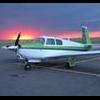3 blade props. What do you think?
-
Members Online
- Schllc
- Glen Davis
- Fly Boomer
- Z W
- redcatcher27
- druidjaidan
- NickG
- Grumpy
- EricJ
- vorlon1
- Mooney-Shiner
- ta2too
- Crawfish
- hammdo
- 1980Mooney
- Shmoo
- Oklahoma Mooney
- MikeOH
- Ibra
- PT20J
- Scott H
- Gilt
- MattCW
- Hank
- rklems
- eman1200
- ad5ut
- rex280ia
- varlajo
- DesertWrecks
- wburger1
- philiplane
- TangoTango
- midlifeflyer
- flyboy0681
- slowflyin
- TCC
- aviatoreb
- JMD
- MDMooney
- GeeBee


Recommended Posts